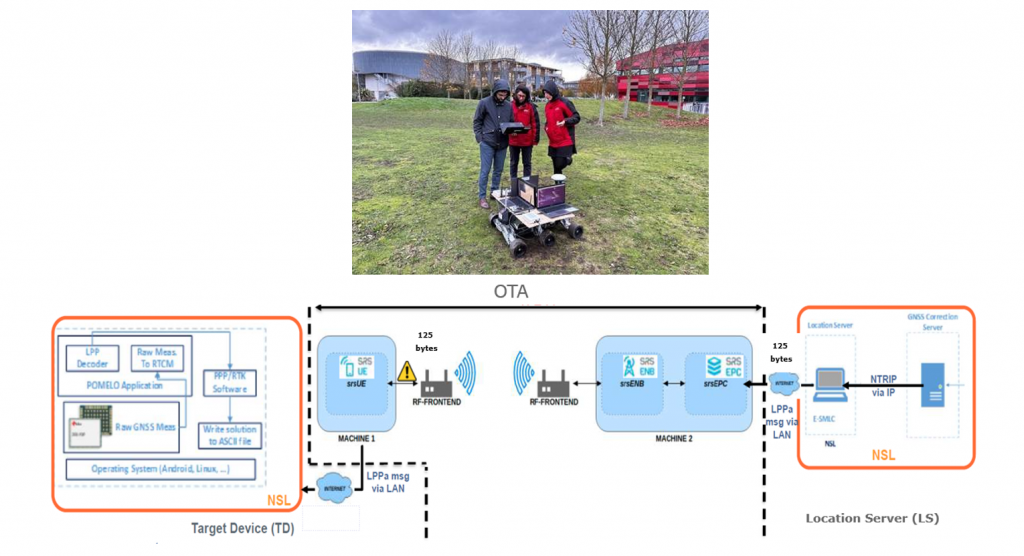Precise Positioning for Mass-Market: Optimal Data Dissemination Demonstrator
Start date: 02/02/2023 15:00
End date: 02/02/2023 16:30
Register for the Final Presentation of the NAVISP EL1 036 Project: “POMELO: Precise Positioning for Mass-Market: Optimal Data Dissemination Demonstrator”
Currently GNSS corrections are provided to users either via satellite broadcast or via IP mobile sessions. The NTRIP protocol (Networked Transport of RTCM via Internet Protocol), released by BKG almost 20 years ago, is an open non-proprietary protocol designed to distribute the GNSS streaming data to a stationary or mobile receiver over the Internet. Although the NTRIP dissemination works well, the TCP is a protocol for communication between exactly two endpoints with a unique IP address, and HTTP is a standard unicast application.
Hence this approach is not scalable, and this represents a big limitation for the dissemination of data to the mass-market users and at larger scale.
The POMELO project had the goal to develop and implement High-Accuracy GNSS Corrections Broadcast mechanism with high fidelity to the Release 15 and Release 16 specifications for 5G of 3GPP. This dissemination mechanism leverages broadcasting protocols and architectures specified by 3GPP for 4G and 5G and does not require an internet connection, circumventing the limitations of existing IP dissemination. This is turn allows scalability of the service as the delivery consists in broadcast, same as in satellite, and bring high-accuracy positioning techniques such as Real-time Kinematic (RTK) and Precise Point Positioning (PPP) to any device served by a 4G or 5G network.
Reflecting the same structure as of a 4G positioning architecture, the POMELO testbed architecture is composed of four main subsystems: GNSS CORS network for corrections generations (element residing outside a 4G network), Location Server, Transmitting Point/Access Node, and Target Devices. Each subsystem acts as a start to finish system, supporting the broadcast of GNSS Assistance Data for positioning solutions to be calculated on the Target Device through RTK/PPP processing.
The project was carried out in the scope of NAVISP Element 1, which is which is dedicated to technology innovation of the European industry in the wide PNT sector.
End-to-end test results carried out in real case conditions have shown that the testbed (TRL=5) is ready to be used for static and slow dynamic applications, using different correction streams and multiple users.
Please check the Agenda and register for the event.

